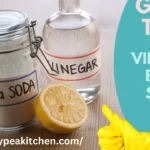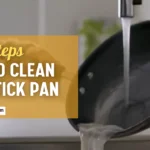Introduction:
Electric kettles are a convenient and essential appliance to have in the kitchen. They heat up water quickly, which makes them perfect for making tea, coffee, or any other hot beverage. The downside of electric kettles is that they tend to accumulate limescale over time. Limescale is a hard and chalky substance that forms on the inside of the kettle due to mineral deposits present in tap water.
Over time, limescale can affect the performance of your electric kettle by reducing its efficiency and even causing it to break down. However, there are some easy tips you can use to keep your electric kettle clean and free from limescale buildup. Regular cleaning is key to maintaining your electric kettle’s performance and extending its lifespan.
Overview of How to get rid of mineral buildup in electric kettles:
Mineral buildup is a common problem in electric kettles that can lead to a decrease in performance and an undesirable taste in your tea or coffee. To remove limescale buildup, fill the kettle halfway with equal parts water and vinegar. Bring the solution to a boil, then let it sit for 15-20 minutes before discarding the mixture.
For stubborn mineral buildup, try using a mixture of baking soda and water. To prevent mineral buildup from occurring in your electric kettle, make sure to regularly clean it by wiping down the exterior with a damp cloth and running a cycle of equal parts water and lemon juice through the machine every few weeks. By following these simple steps, you can ensure that your electric kettle remains free from limescale buildup and continues to function optimally for years to come.
10 ways How to get rid of mineral buildup in electric kettles
1. Vinegar and Water Solution:
One of the most efficient ways to get rid of limescale in your electric kettle is by using vinegar and water solution. This method is not only easy but also very effective. Simply fill your kettle with equal parts water and white distilled vinegar, then heat the mixture until it boils. Let it cool for about an hour before rinsing thoroughly with clean water.
2. Lemon Juice and Water Solution:
To make this solution, simply fill your kettle with equal parts water and lemon juice (fresh-squeezed or bottled). Bring the mixture to a boil, then turn off the heat and let it sit for an hour or two. Once you’ve allowed the solution to soak for a while, rinse out your kettle thoroughly with clean water.
3. Baking Soda and Water Solution:
This inexpensive cleaning solution can easily be made by mixing one teaspoon of baking soda with 500ml of water. Once mixed, pour the solution into the kettle and let it sit for about an hour. After an hour has passed, boil the kettle with the solution still inside. Once boiled, empty out the solution and rinse the kettle thoroughly to ensure no residue remains.
4. Citric Acid and Water Solution:
To make the solution, mix one tablespoon of citric acid powder with one cup of water. Pour the mixture into the kettle and let it sit for about 30 minutes. Then, boil the kettle and let it cool before pouring out the solution. Rinse thoroughly with water to remove any remaining residue.
5. Boiling Water and White Vinegar Soak:
This method is cheap, easy, and eco-friendly compared to using harsh chemicals. All you need to do is fill the kettle with equal parts of water and white vinegar, then let it boil for about 10-15 minutes. After boiling, switch off the kettle and unplug it from the power source. Let the solution sit inside for another 15-20 minutes before pouring it out. Rinse the kettle thoroughly with clean water to get rid of any remaining vinegar smell or taste.
6. Boiling Water and Baking Soda Soak:
To do this, fill the kettle halfway with water and bring it to a boil. Then, add a tablespoon of baking soda and let the solution sit for about 20 minutes before pouring it out. Rinse the kettle thoroughly with clean water afterward.
7. Commercial Electric Kettle Cleaner:
Using a commercial electric kettle cleaner is relatively easy. Simply add the recommended amount of cleaner to your empty kettle, fill it with water, and bring it to a boil. Let the solution sit for a few minutes before pouring out the contents and rinsing thoroughly with clean water. For best results, repeat this process every few months or as needed.
8. Hydrogen Peroxide and Baking Soda Paste:
To make the paste, mix equal parts hydrogen peroxide and baking soda in a bowl until it forms a thick consistency. Next, apply the paste to the interior of your kettle and let it sit for 15-20 minutes. Use a soft-bristled brush or sponge to gently scrub away any stubborn stains or buildup. Lastly, rinse out the kettle thoroughly with water until all traces of the paste have been removed.
9. Scrub with a Toothbrush and Dish Soap:
To start, fill your kettle halfway with water and add a few drops of dish soap. Boil the water in the kettle for about 10 minutes before unplugging it and allowing it to cool. Once cooled, use a toothbrush dipped in water to scrub away any limescale buildup from the inside of your kettle. Rinse thoroughly with clean water.
10. Water Softener Filter Installation:
To install a water softener filter for your kettle, first, determine the type of filter you need based on your specific model and brand of the kettle. Most filters are designed to be compatible with a variety of models, but it’s important to double-check before purchasing. Once you have the right filter, simply follow the manufacturer’s instructions for installation.
Conclusion:
Limescale buildup in electric kettles can be frustrating and unsanitary. However, with these easy tips for cleaning your kettle, you can say goodbye to the problem for good. Whether it’s using vinegar or lemon juice to descale, or simply wiping down your kettle regularly, keeping it clean is a breeze. By taking care of your electric kettle, you’ll not only ensure that you have fresh-tasting hot beverages every time but also prolong their lifespan. So why not give these tips a try? Your taste buds (and your wallet) will thank you!



